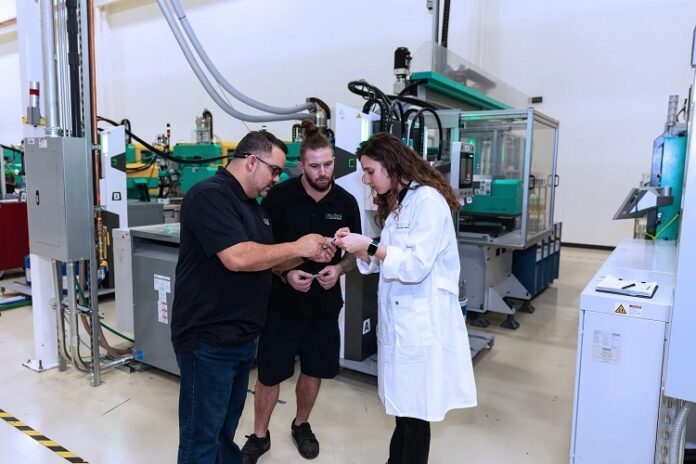Medical device injection molding is used to manufacture medical and pharmaceutical parts with tight tolerances. It is a cost-effective method for producing parts that require precision and accuracy. This process involves injecting molten plastic into a mold, which is cooled and hardened to form the desired shape. The medical device injection molding process can create various products, including medical devices, drug delivery systems, and diagnostic equipment. This article explores the basics of medical injection molding, its benefits, and its applications in the healthcare sector.
Table of Contents
Understanding Medical Device Injection Molding
Medical device injection molding is a process that involves the injection of molten plastic materials into a mold cavity, where they solidify and take the shape of the mold. The method uses various materials, including thermoplastics, thermosets, and elastomers. During the injection molding process, the plastic material is heated until it melts and then injected into a mold cavity. Once the plastic has cooled and solidified, the mold is opened, and the finished product is removed.
Medical equipment molding requires high precision and accuracy to produce complex medical components and devices that meet industry standards. The process is automated, which ensures consistency and reliability in the production of medical devices. Medical device injection molding is suitable for high-volume production and offers a cost-effective solution for manufacturing medical devices.
Applications of Medical Equipment Injection Molding
Medical equipment injection molding produces a broad range of medical devices and components. Some of the most common applications of medical injection molding include:
Surgical instruments: Medical injection equipment molding produces surgical instruments, including forceps, clamps, and retractors.
Drug delivery systems: Injection molding is used to manufacture drug delivery systems, such as syringes, inhalers, and insulin pens
Diagnostic devices: Injection molding produces diagnostic devices such as test strips, blood glucose meters, and pregnancy test kits.
Medical implants: Medical equipment injection molding produces hip and knee replacements, dental implants, and pacemaker components.
Benefits of Medical Device Injection Molding
● Medical injection molding offers numerous benefits, making it an ideal process for manufacturing medical devices. Some of the benefits include:
● High precision and precision: Injection molding technology offers high precision and accuracy, ensuring that the finished product meets industry standards.
● Cost-effective: Injection molding is a cost-effective process for manufacturing medical devices, especially for high-volume production.
● Consistency and reliability: Injection molding is an automated process that ensures consistency and reliability in the production of medical devices.
● Design flexibility: Injection molding allows for producing complex shapes and designs, which would be difficult or impossible to achieve using other manufacturing processes.
● Reduced waste: Injection molding produces less debris than other manufacturing processes, making it an environmentally friendly solution for medical device production.
Challenges of Medical Equipment Injection Molding
Despite the benefits of medical equipment injection molding, the process presents some challenges that must be addressed to ensure high-quality production. Some of the challenges include the following:
● Material selection: The appropriate plastic material for medical device production can be challenging due to the various regulatory requirements and standards.
● Tooling: The design and fabrication of molds can be costly and time-consuming, especially for complex structures.
● Sterilization: To ensure safety, medical devices produced using injection molding must be sterilized. The sterilization process can be challenging and may affect the device’s mechanical properties.
● FDA Regulations: When it comes to medical device injection molding, an additional challenge is ensuring that all materials used meet FDA regulations and are tested for biocompatibility before being approved for use in medical devices or pharmaceuticals. Furthermore, components must also comply with strict safety standards and any applicable industry standards, such as ISO 13485 or ASTM F2100-19 certification requirements.
Conclusion
Medical injection molding is an efficient and cost-effective way to produce high-quality parts for medical applications with tight tolerances and complex geometries that would otherwise be difficult or impossible to achieve using other manufacturing methods. Despite its many benefits, some challenges are still associated with this process, such as obtaining uniform wall thickness throughout a part or meeting stringent safety requirements for use in medical applications. However, by working closely with experienced professionals who understand these challenges and have experience working within FDA guidelines, manufacturers can ensure their products meet all requirements while still providing superior performance at an affordable price point.









